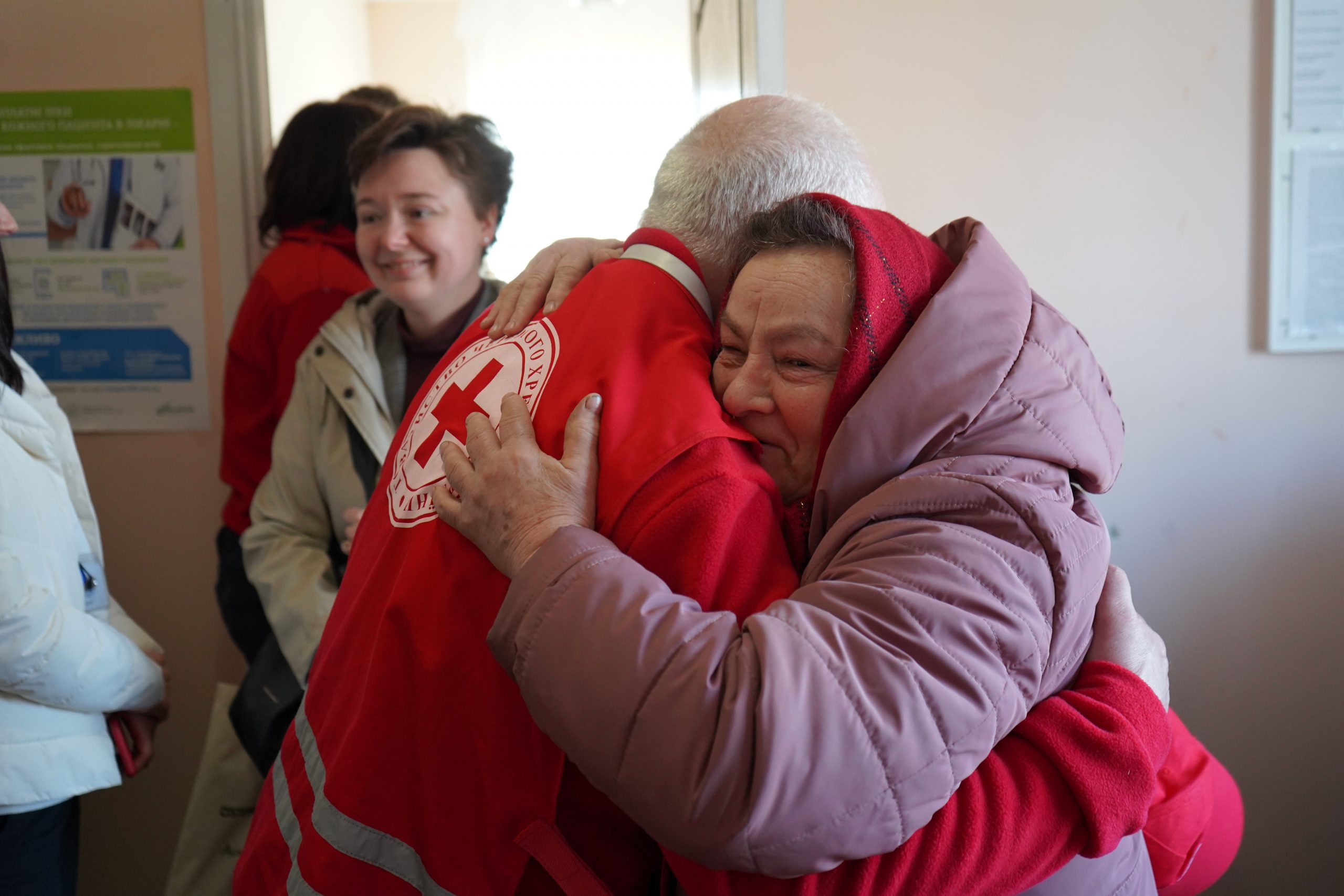HISTORY OF UKRAINIAN RED CROSS

The Ukrainian Red Cross is the largest humanitarian organisation in Ukraine, focusing its efforts on protecting people’s lives, health, and dignity for over a century. It comprises 24 regional and almost 200 district branches, with more than 8,000 volunteers who:
– assist the state in responding to all emergencies;
– provide psychosocial and humanitarian assistance to vulnerable groups of the population;
– offer first aid training;
– deliver comprehensive humanitarian aid to internally displaced persons;
– restore infrastructure damaged as a result of the war;
– establish temporary modular towns for those who have lost their homes;
– equip communities with autonomous power generators, heating stoves, boilers, and other essentials to support critical infrastructure, medical facilities, and IDP shelters in case of possible damage to energy facilities during the war.
– spread awareness about mine risk, prevalent diseases, and healthy lifestyles;
– provide home-based care for lonely people;
– disseminate information on international humanitarian law;
– provide primary healthcare in remote settlements;
– help those who need support the most.
The International Red Cross and Red Crescent Movement, dedicated to relief, humanity, support, and rescue, was founded on February 17, 1863, at the initiative of Swiss businessman and public figure Jean Henri Dunant.
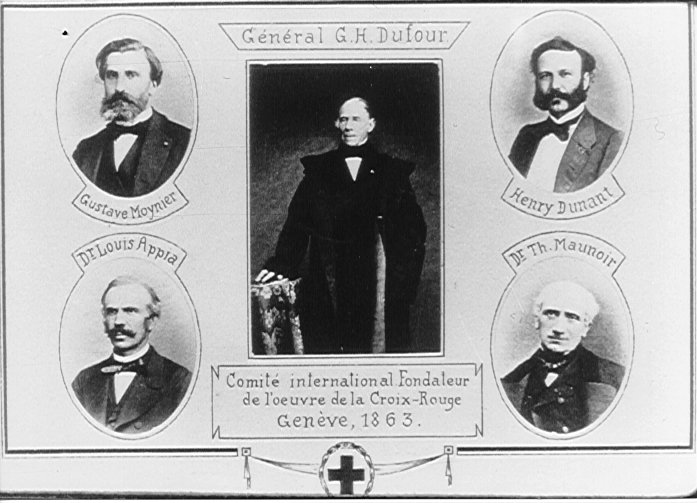
Jean Henri Dunant, a Swiss public figure and Nobel Peace Prize laureate, is renowned for founding the largest global humanitarian movement, the International Red Cross and Red Crescent Movement. His profound compassion and unwavering commitment to aiding those in need catalysed the establishment of this organisation.
Henri Dunant, who spent much of his life as an entrepreneur, conceived the idea of creating a neutral and independent movement to aid the wounded after witnessing the horrors of the Battle of Solferino. He successfully transformed his vision into reality. Today, the International Red Cross and Red Crescent Movement has been providing assistance to people affected by natural disasters, emergencies, migration, and wars for over 160 years.
In 1859, Henri Dunant witnessed the aftermath of the Battle of Solferino, the largest battle of the Austro-Italian-French War. Tens of thousands of wounded soldiers, suffering from wounds, injuries, and bleeding, remained on the battlefield in need of help. However, there were few people willing and able to help. Shocked by this state of affairs, Henri Dunant initiated the organisation of individuals to help and rescue the injured. Together, they set up makeshift hospitals. For the first time in history, help was provided to all the wounded, regardless of which side of the armed conflict they belonged to, because the most important thing was to save lives. Thousands of people received first aid, food, warmth, care, support, and concern. Thanks to the coordinated assistance, countless lives were saved.
Driven by these events, Henri Dunant established a neutral organisation that would offer assistance to all, regardless of origin, political or religious affiliations, or race. Thus, the International Red Cross and Red Crescent Movement emerged as the world’s first-ever impartial and largest humanitarian movement.

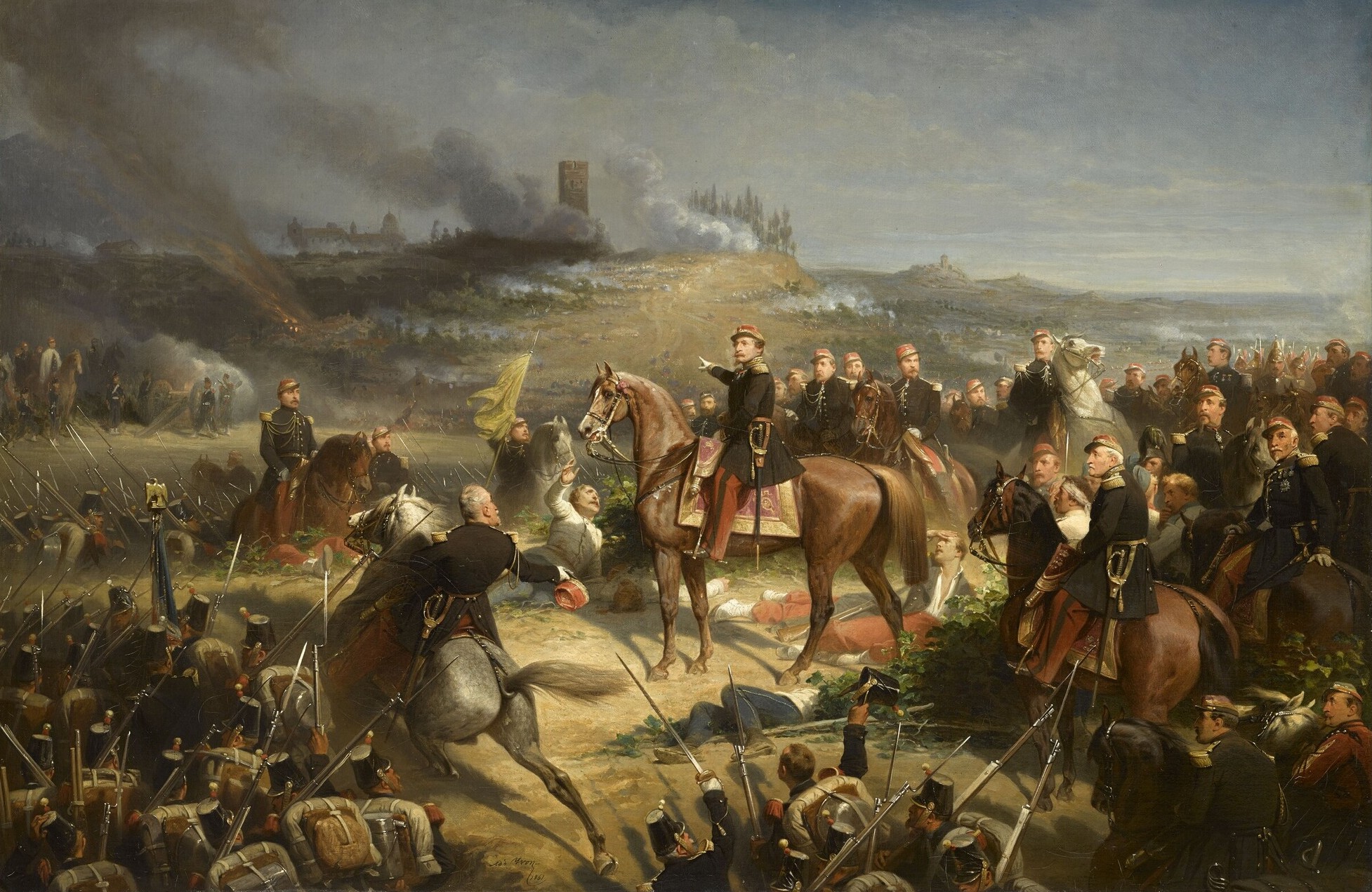
After founding the International Red Cross and Red Crescent Movement in 1863, Red Cross branches emerged gradually across European countries and subsequently worldwide. In Ukraine, the first Red Cross branches appeared in 1867 in Simferopol and Kamianets-Podilskyi, operating within the jurisdiction of the Austro-Hungarian and Russian Empires. These branches provided humanitarian aid to victims of famine and natural disasters, combated epidemics such as plague, typhus, and smallpox, established free medical and rehabilitation facilities, and trained nurses to care for the wounded and those in need.
However, it would be more than 50 years before an independent national society of the Ukrainian Red Cross emerged.
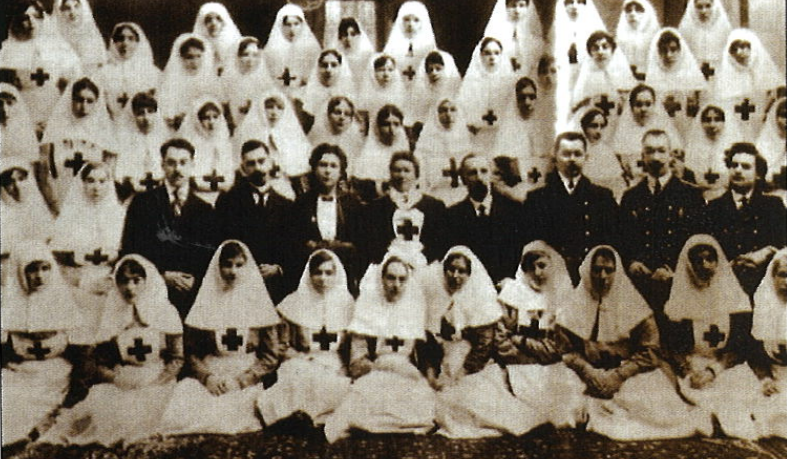
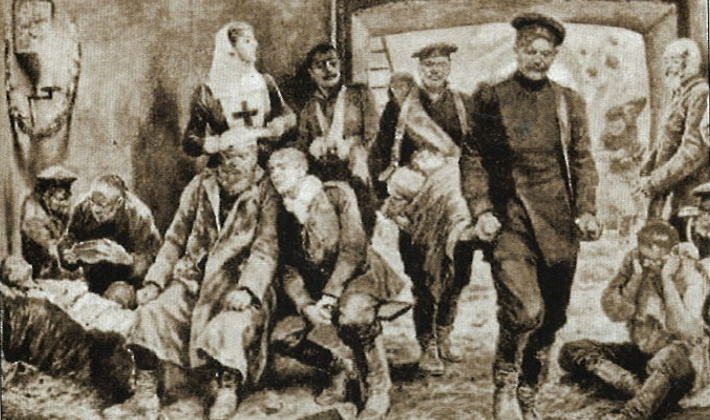
Throughout World War I, Red Cross branches helped those affected by the large-scale hostilities. Red Cross sanitary units and nurses operated on the front lines, offering immediate first aid and coordinating the transportation of the wounded via Red Cross evacuation trains and steamers. Furthermore, hospitals and outpatient clinics were established nationwide to provide care for the growing number of injured individuals. In addition to aiding the wounded, Red Cross branches extended humanitarian support to millions of war refugees. To assist those who had been displaced and lost their homes, free food distribution stations were established, temporary shelters were built, and essential provisions, including clothing and food, were provided.
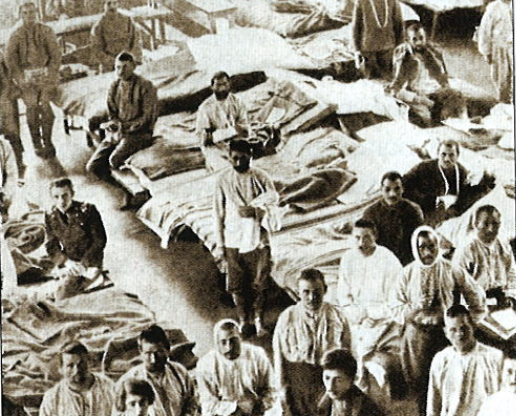
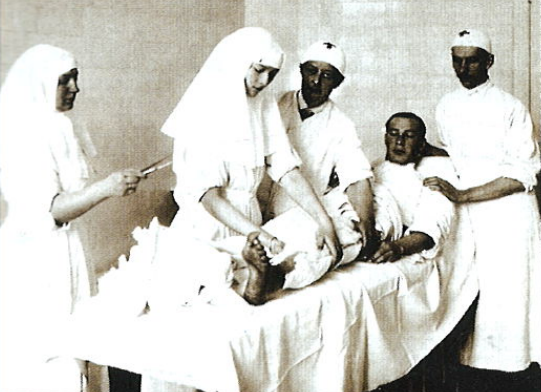
At the end of 1917, when the process of Ukraine’s separation and independence began, the idea of establishing the Ukrainian National Red Cross Society emerged. Consequently, on April 18, 1918, the Ukrainian Red Cross Society was founded in Kyiv, marking over 105 years of continuous humanitarian assistance to vulnerable groups of the population and steadfast response to emergencies and challenges across the nation. The first heads of the Ukrainian Red Cross were Yevmen Lukasevych, Borys Matiushenko, and Vasyl Nalyvaiko.
In the early years of its existence, the Ukrainian Red Cross faced significant challenges – the consequences of the war, which caused a humanitarian catastrophe. Volunteers of the Ukrainian Red Cross built hospitals and food distribution centres, while sanitary trains traversed the remote settlements to provide food, drinking water and medicines to all those in need. Concurrently, efforts to combat disease epidemics were underway: disseminating information on infection transmission and prevention, administering vaccinations against typhus and other infectious diseases in the Ukrainian Red Cross sanitary laboratories. Furthermore, regular training sessions were conducted for Ukrainian Red Cross sanitary units that provided medical care to the wounded.
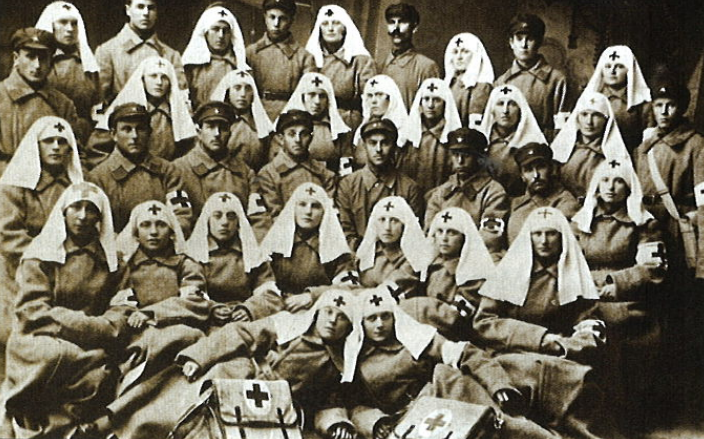
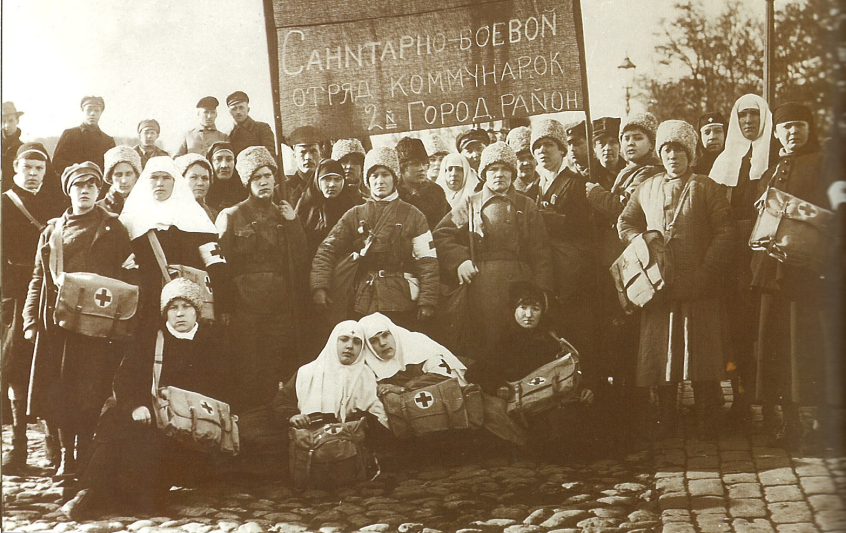
In 1923, the Ukrainian Red Cross became a part of the Union of Red Cross and Red Crescent Societies of the USSR. Initially, its primary tasks were to address the aftermath of the prolonged war and offer humanitarian aid to the affected population. Famine and outbreaks of dangerous diseases were widespread throughout the country. In response, the Ukrainian Red Cross established thousands of free soup kitchens, distributed food and other forms of humanitarian assistance to those in need, continued to educate the population about disease prevention, and maintained hundreds of medical facilities offering free healthcare.
As time progressed, the organisation’s activities expanded, leading to the establishment of new medical and rehabilitation facilities, dispensaries, bathhouses, pharmacies, maternity hospitals, nurseries, and health and wellness centres across the nation.
To ensure effective medical assistance for those in need, the Ukrainian Red Cross consistently trained sanitary units and nurses, and also operated medical aircraft and sanatorium ships.
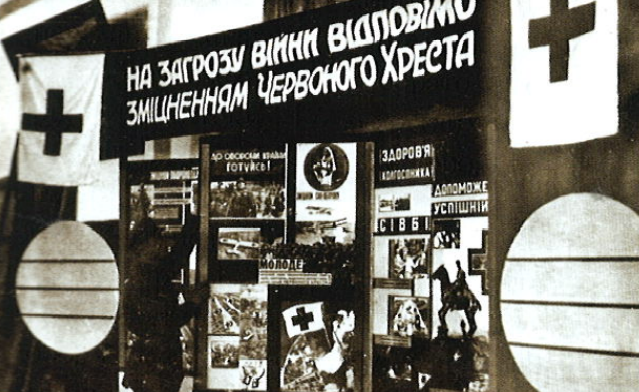
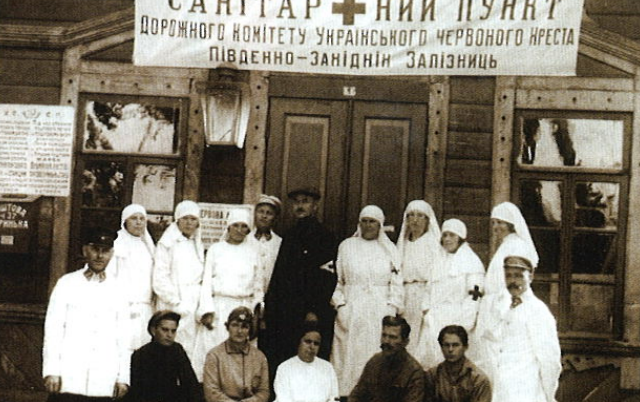
With the outbreak of World War II, over 100,000 nurses and sanitary instructors from the Ukrainian Red Cross served on the front lines, providing medical care and saving the lives of the wounded. During that period, there was a widespread promotion of blood donation, as numerous medical facilities required blood supplies to assist the wounded. Additionally, sanitary and epidemiological units were established to conduct medical examinations and sanitary control in settlements affected by the hostilities.
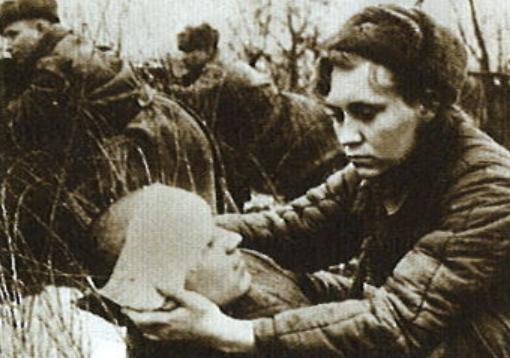
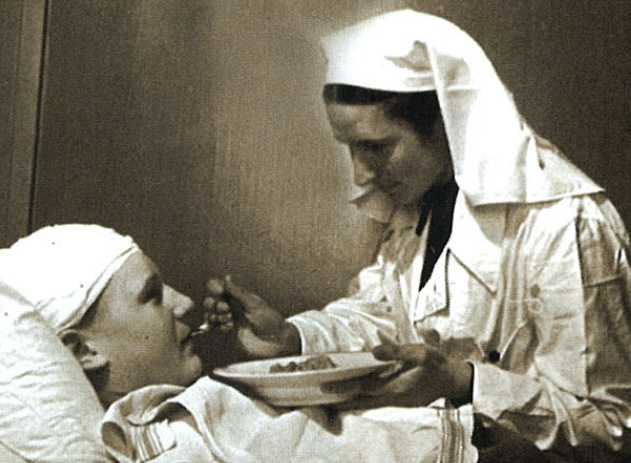
After World War II, the primary objective of the Ukrainian Red Cross was to aid in the country’s reconstruction and address the sanitary aftermath of the war. The Ukrainian Red Cross branches initiated efforts to restore medical facilities nationwide and establish soup kitchens to alleviate hunger. Concurrently, a sanitary service was established to oversee hygiene standards and household sanitation in the communities. The Ukrainian Red Cross trained volunteers to provide healthcare, emotional support, and assistance to the sick, whether in hospitals or at home. In 1961, these efforts culminated in the establishment of the Ukrainian Red Cross Nursing Service, which provided medical and social care to Ukraine’s most vulnerable groups for over the next 50 years.
In the 1970s and 1980s, the Ukrainian Red Cross remained committed to supporting the healthcare system, disseminating information about healthy lifestyles, promoting volunteerism and blood donation, teaching first aid, and providing effective humanitarian aid to those in need. However, the next significant challenge for the Ukrainian Red Cross and for Ukraine as a whole came with the Chornobyl disaster of 1986.

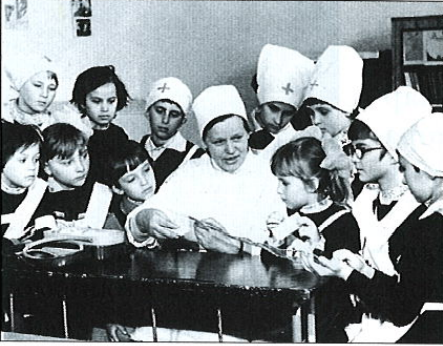
Since the first hours of the Chornobyl disaster, Ukrainian Red Cross volunteers were involved in the evacuation of people from the areas of radioactive contamination. They helped evacuees with housing and provided food and essential medicines, first aid, and psychological support. Helping to tackle the consequences of the Chornobyl disaster became one of the core tasks of the Ukrainian Red Cross. A comprehensive Chornobyl program was later established, which went on to become the largest and most effective support program in the world: mobile diagnostic teams surveyed the affected population and conducted outreach in the affected areas.
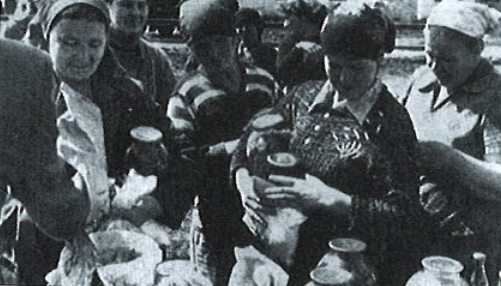
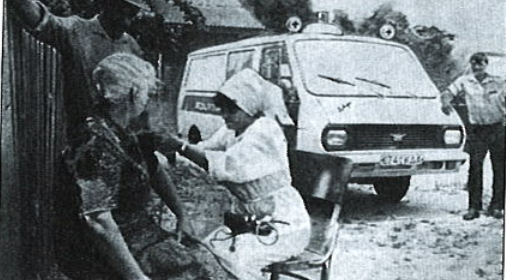
With the proclamation of Ukraine’s independence, the Ukrainian Red Cross also gained autonomy. By the relevant Decree of the President of Ukraine, it was recognized as the sole national Red Cross society in Ukraine.
The Ukrainian Red Cross continued its comprehensive humanitarian support for the newly independent country. Volunteers across the country taught first aid, raised awareness about dangerous diseases such as HIV and tuberculosis, provided care for vulnerable groups, promoted blood donation, and spread knowledge of international humanitarian law. During this time, the Ukrainian Red Cross launched its Tracing Service to help restore family links lost as a result of natural disasters, wars, and other emergencies.
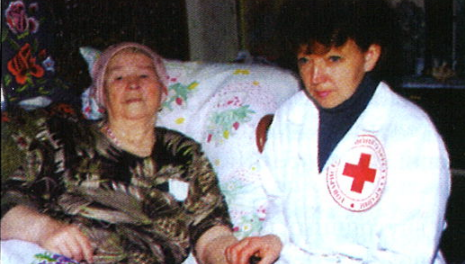
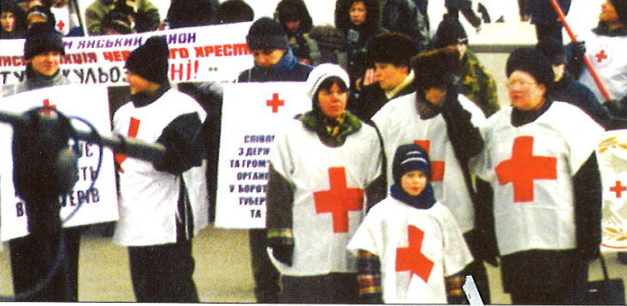
The next challenge came with the Revolution of Dignity in 2013. Ukrainian Red Cross emergency response teams were established to offer first aid to the victims, facilitate evacuation, and provide psychological support to a large number of people at the Euromaidan. Presently, these emergency response teams continue to help the state by promptly responding to all emergencies in the country and providing assistance to affected individuals alongside the State Emergency Service of Ukraine.
In 2014, following the annexation of Crimea and the outbreak of hostilities in the Donetsk and Luhansk regions, the Ukrainian Red Cross shifted its focus to providing humanitarian support for a large number of internally displaced persons. People received food, hygiene kits, and other basic necessities, as well as psychosocial support, voucher assistance, and aid in rebuilding households and reconnecting with lost family links. Residents of frontline communities in the Donetsk and Luhansk regions were educated about mine risks and proper handling of explosive ordnance. Additionally, mobile health units of the Ukrainian Red Cross commenced their operations, providing primary medical care in areas with limited access to healthcare.
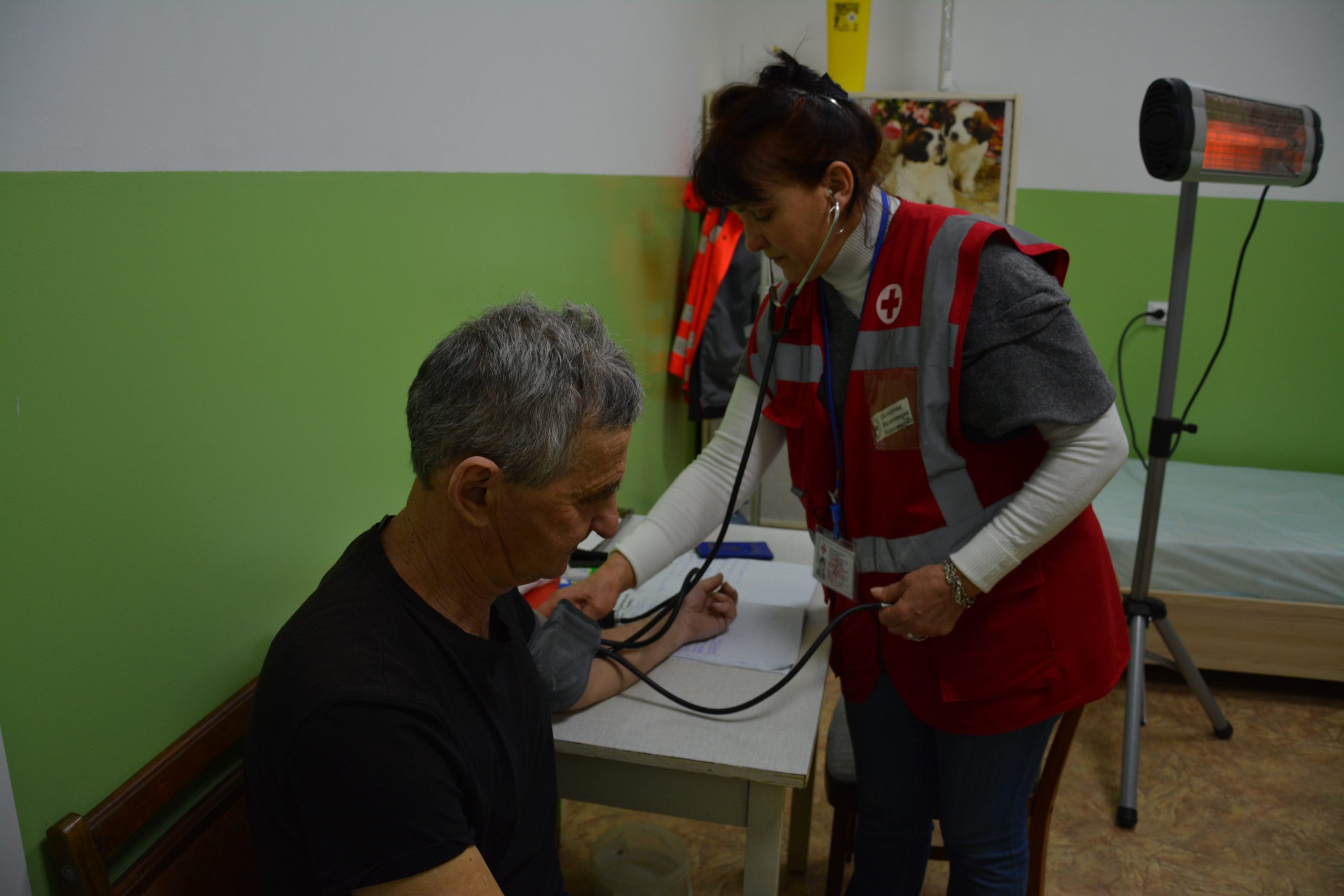
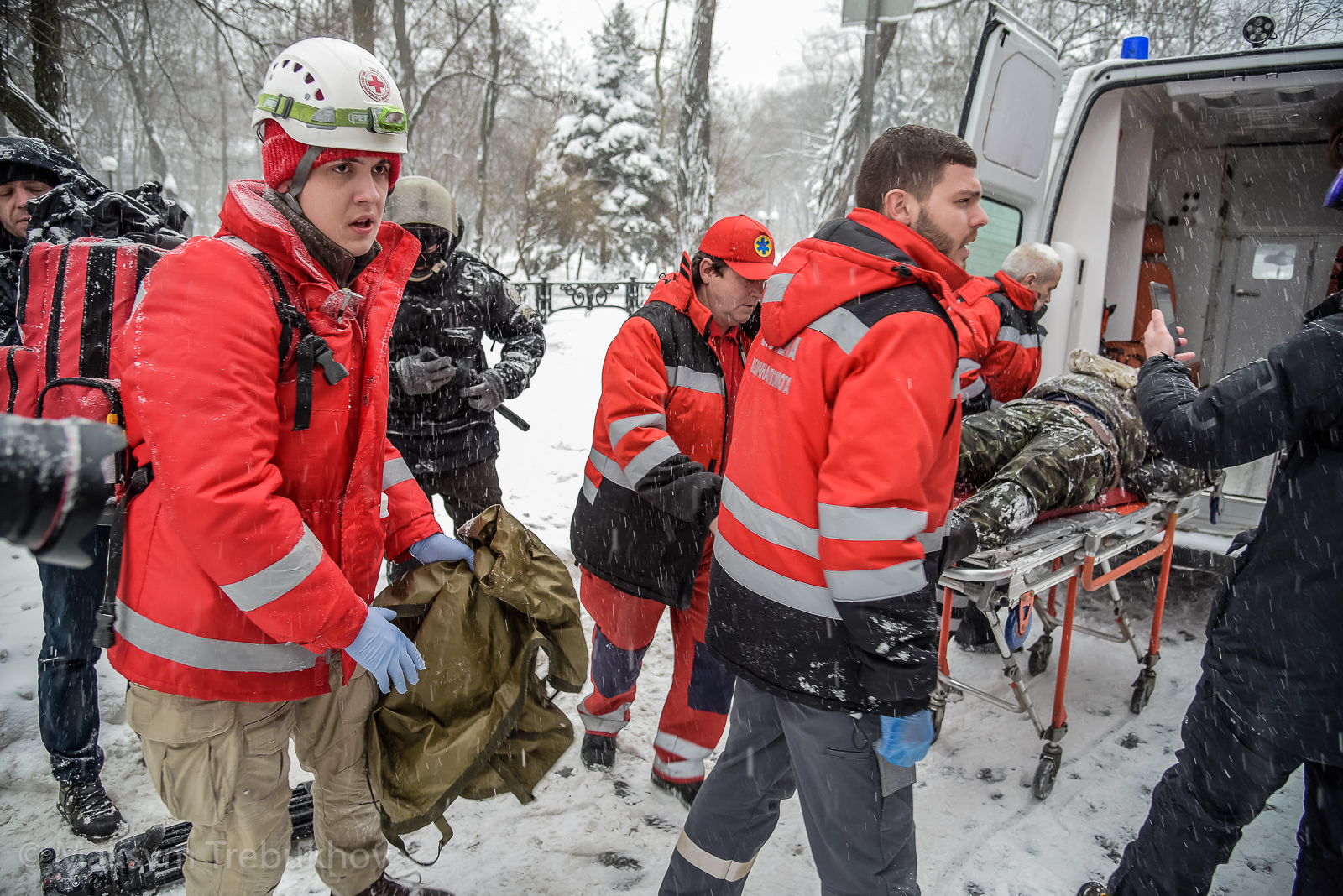
The Ukrainian Red Cross has undergone significant development, enhancing its skills and transitioning from Soviet methodologies to modern international practices of humanitarian aid. In 2016, the organisation launched a large-scale reform aimed at strengthening its operations and ensuring sustainability. Today, the Ukrainian Red Cross stands as a formidable National Red Cross Society, implementing numerous programmes and projects to provide comprehensive and effective humanitarian assistance. Across the country, Ukrainian Red Cross branches support the most vulnerable groups of the population by distributing essential supplies such as food, hygiene kits, and clothing. They also conduct first aid training sessions and psychosocial support activities, assist the state in responding to emergencies, disseminate knowledge of international humanitarian law, promote blood donation, foster the volunteer movement in Ukraine, and implement humanitarian education initiatives. With each step, the humanitarian efforts of the Ukrainian Red Cross continue to grow more comprehensive and impactful.
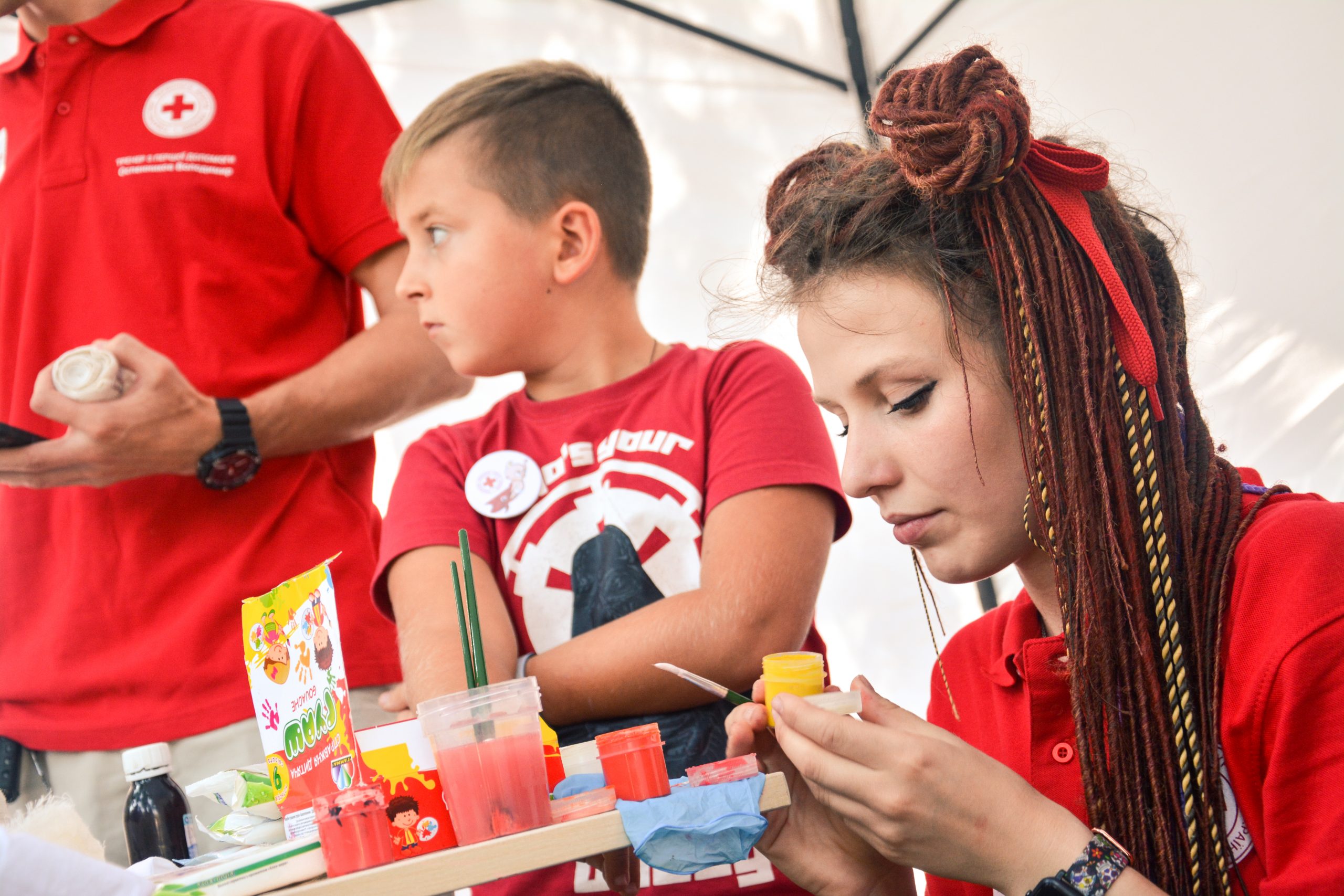
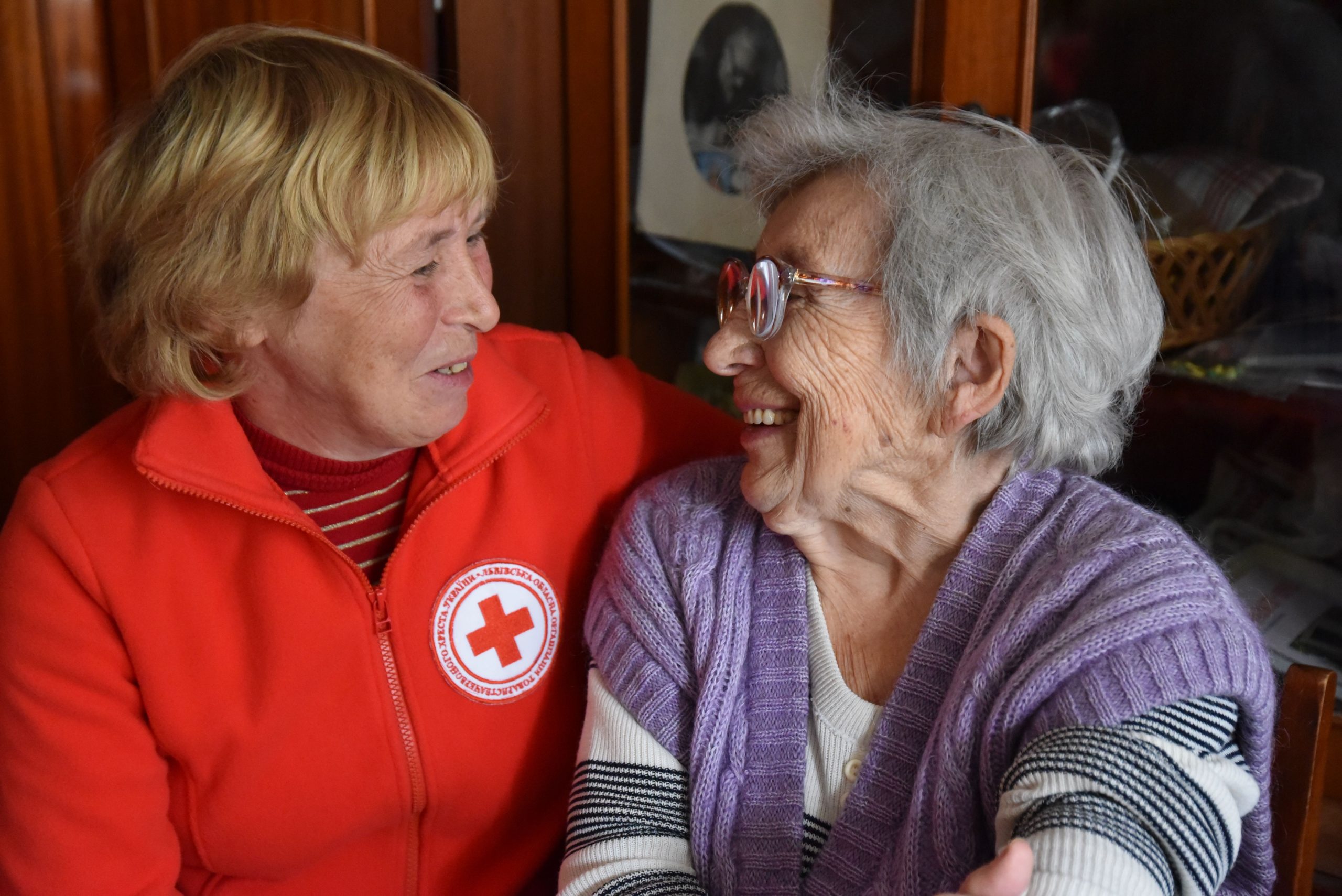
The COVID-19 pandemic became the next challenge in modern Ukrainian history. The entire world confronted an unfamiliar disease that impacted all aspects of people’s lives. The Ukrainian Red Cross, as the largest humanitarian organisation in Ukraine, collaborated with state authorities to combat the spread of COVID-19 in the country. The Ukrainian Red Cross supplied medical institutions with the necessary equipment for patient treatment, provided personal protective equipment (such as antiseptics and masks) to medical staff, and conducted information campaigns to promote blood donation, educate on the characteristics of coronavirus infection, and mitigate its spread, including later efforts to promote COVID-19 vaccination. The distribution of humanitarian aid and other activities of the Ukrainian Red Cross were promptly adjusted to adhere to quarantine restrictions, ensuring that the most vulnerable groups of the population continued to receive necessary assistance, support, and care, particularly those in social isolation.
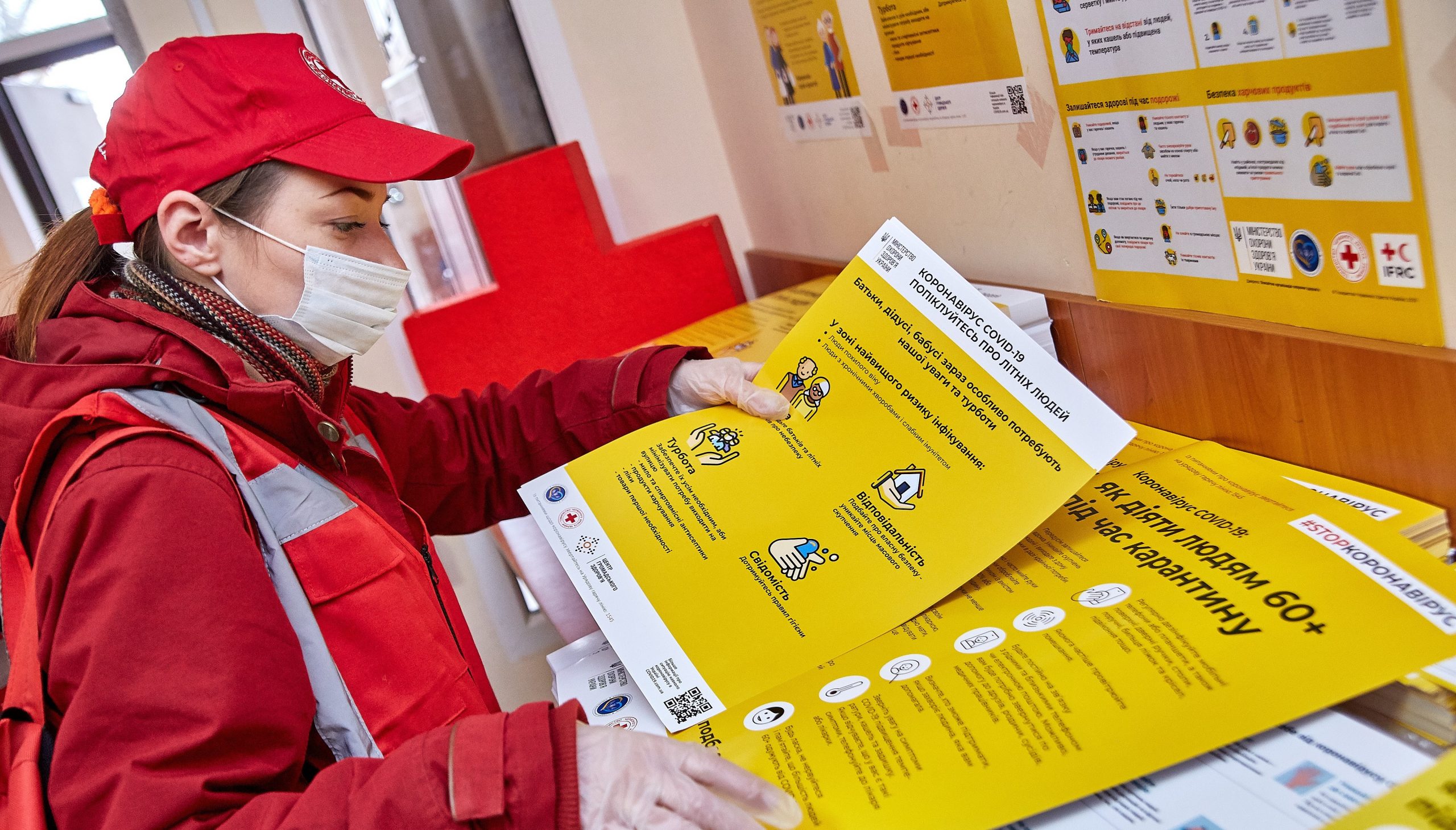
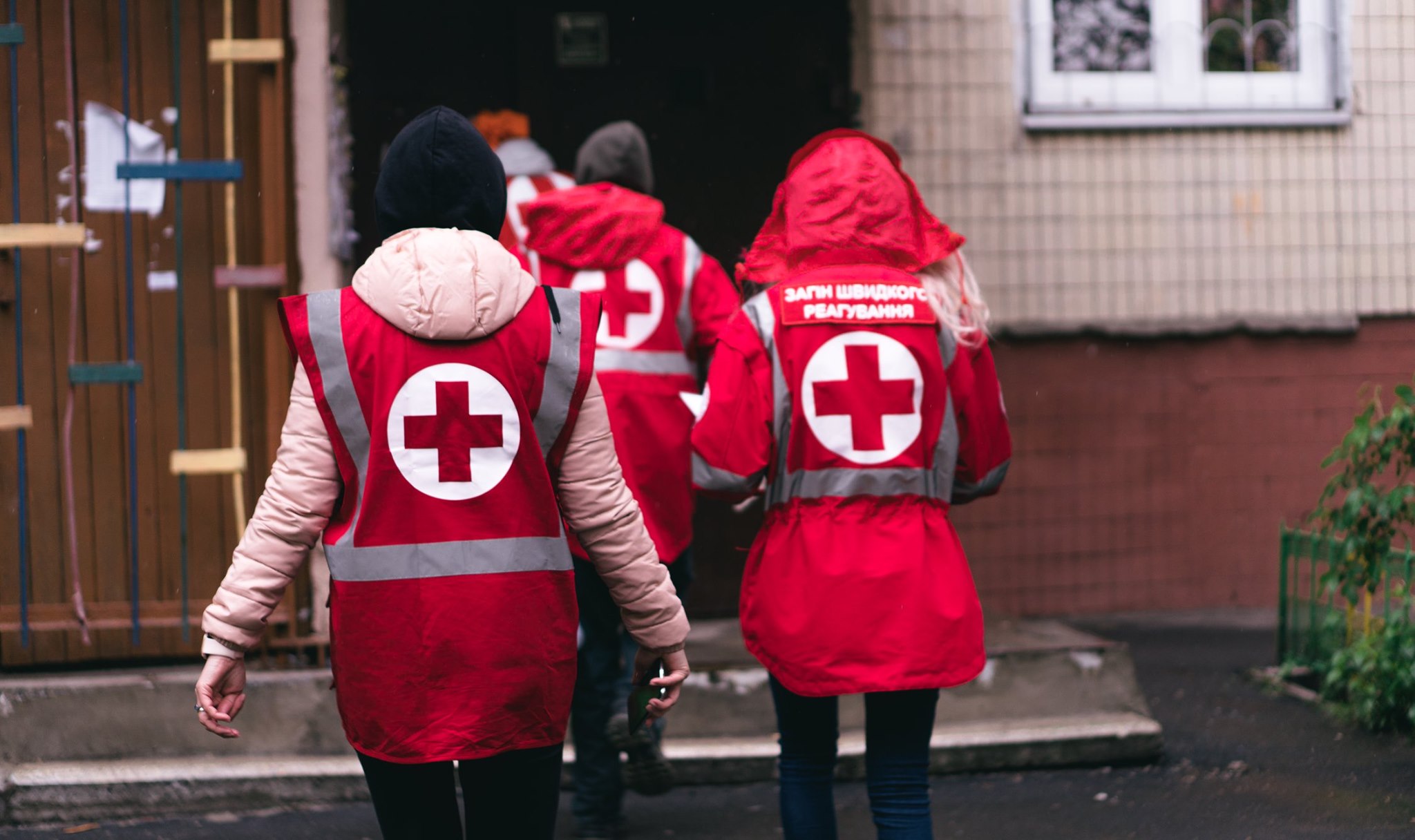
Activities of the Ukrainian Red Cross During the Full-Scale Russia′s Invasion of Ukraine (2022-2023)
February 24, 2022, marked a significant turning point in the lives of countless people. The Ukrainian Red Cross mobilised all available resources and personnel to help those affected. Staff and volunteers worked tirelessly, delivering humanitarian aid almost around the clock. They assisted in evacuating and transporting people with limited mobility from the hotspots, arranged temporary accommodations, were on duty at the railway stations and border crossing points, provided first aid training, informed about mine risks, and offered psychosocial support and psychological first aid.
As a result of the large-scale destruction and relocation of a significant number of people, Ukrainian society has encountered numerous social and humanitarian challenges. To provide comprehensive and effective support to Ukrainians, the Ukrainian Red Cross has scaled up all its activities and launched new projects. Thousands of volunteers and staff of the Ukrainian Red Cross have helped and continue to assist in the restoration and rebuilding of damaged infrastructure. They provide communities with power generators and modular heating plants, improve living conditions in temporary accommodations for internally displaced persons, and construct modular towns for them. Additionally, they implement rehabilitation programmes, support medical facilities, and respond to all emergencies, working on-site to assist first responders and those affected. They also educate on mine risk and prevalent diseases, conduct first aid training, care for people’s mental well-being, and provide humanitarian aid to those in need. Furthermore, mobile health units offer primary healthcare services in the most remote settlements across various regions, while social assistants of the Ukrainian Red Cross provide support and care for lonely elderly people throughout the country.
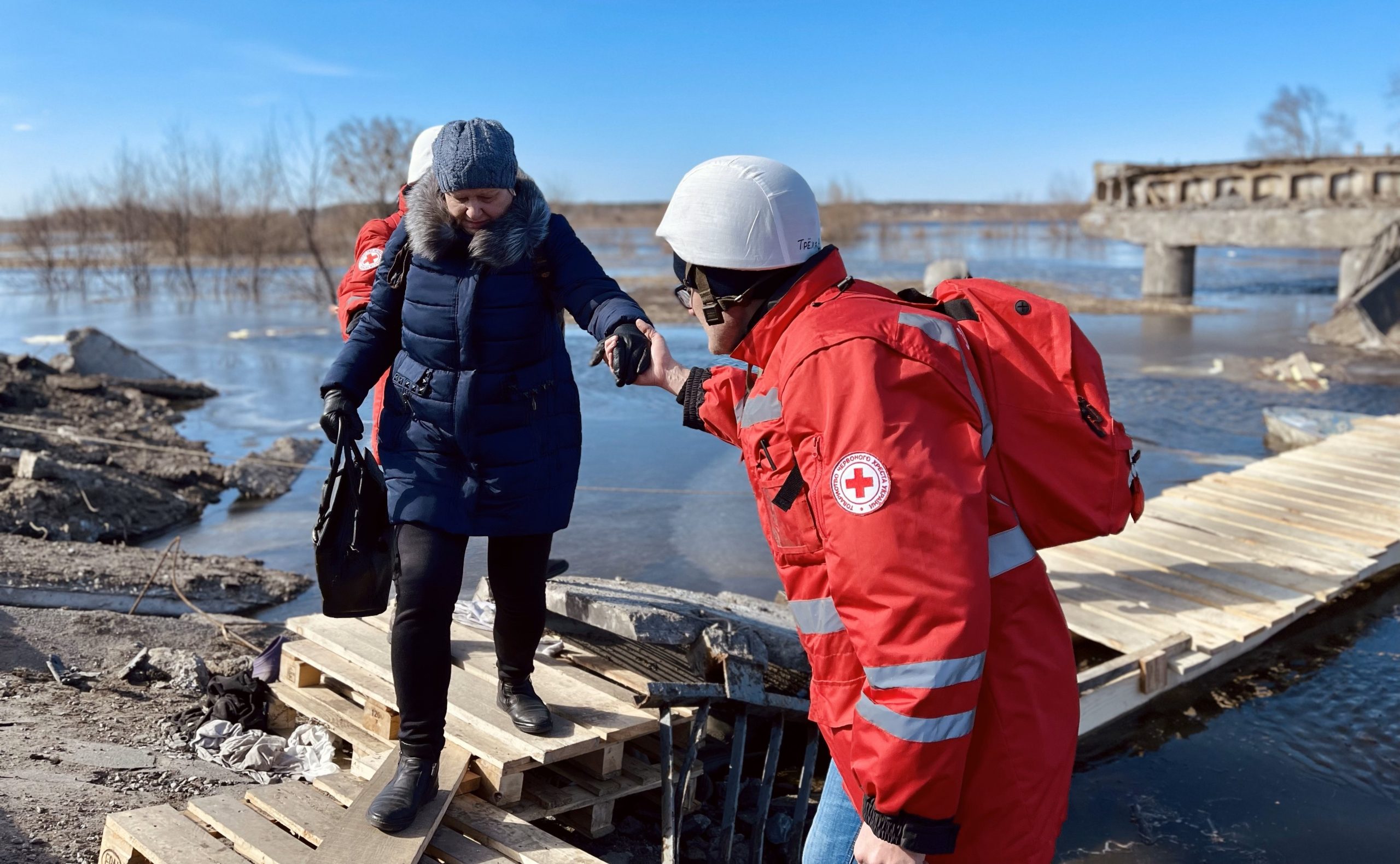
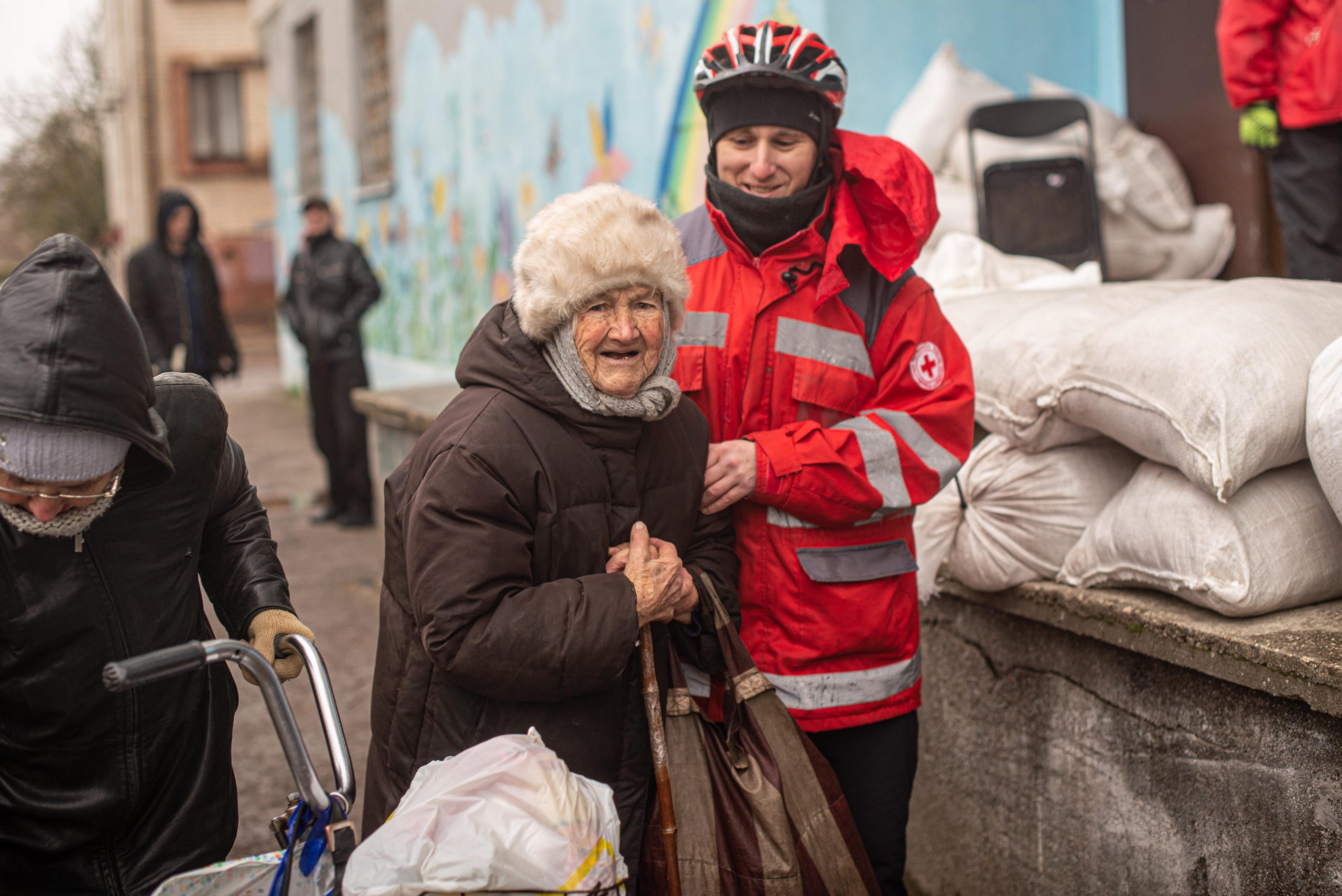
On June 6, 2023, the dam of the Kakhovka hydroelectric power station was blown up. Thousands of people were trapped in water, and kilometres of land became flooded, destroying households and homes. From the first hours of the disaster, Ukrainian Red Cross volunteers, along with the State Emergency Service of Ukraine, began evacuating people from the flooded areas and transporting individuals with limited mobility to safer locations. Those affected were provided with food, drinking water, and first aid, including psychological support. Mobile health units of the Ukrainian Red Cross offered medical consultations and examinations in hard-to-reach communities.
Currently, the Ukrainian Red Cross is helping to restore damaged households, providing drinking water and water purification equipment, offering comprehensive humanitarian support, and informing about the most prevalent infectious diseases and the increased risk of mines due to massive flooding. Additionally, the Ukrainian Red Cross supplies water tanks and water treatment systems to the areas that have lost access to clean water.
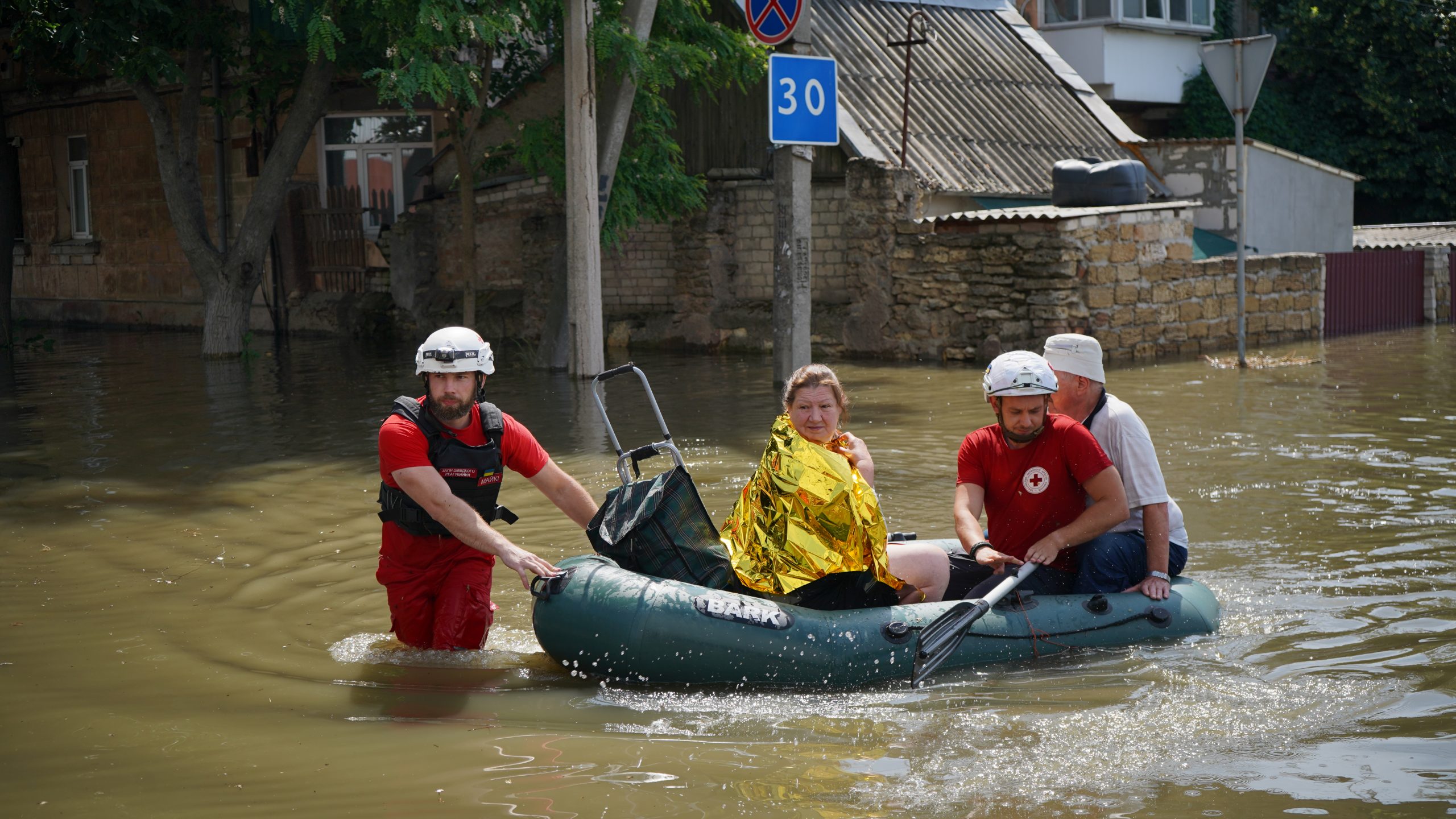
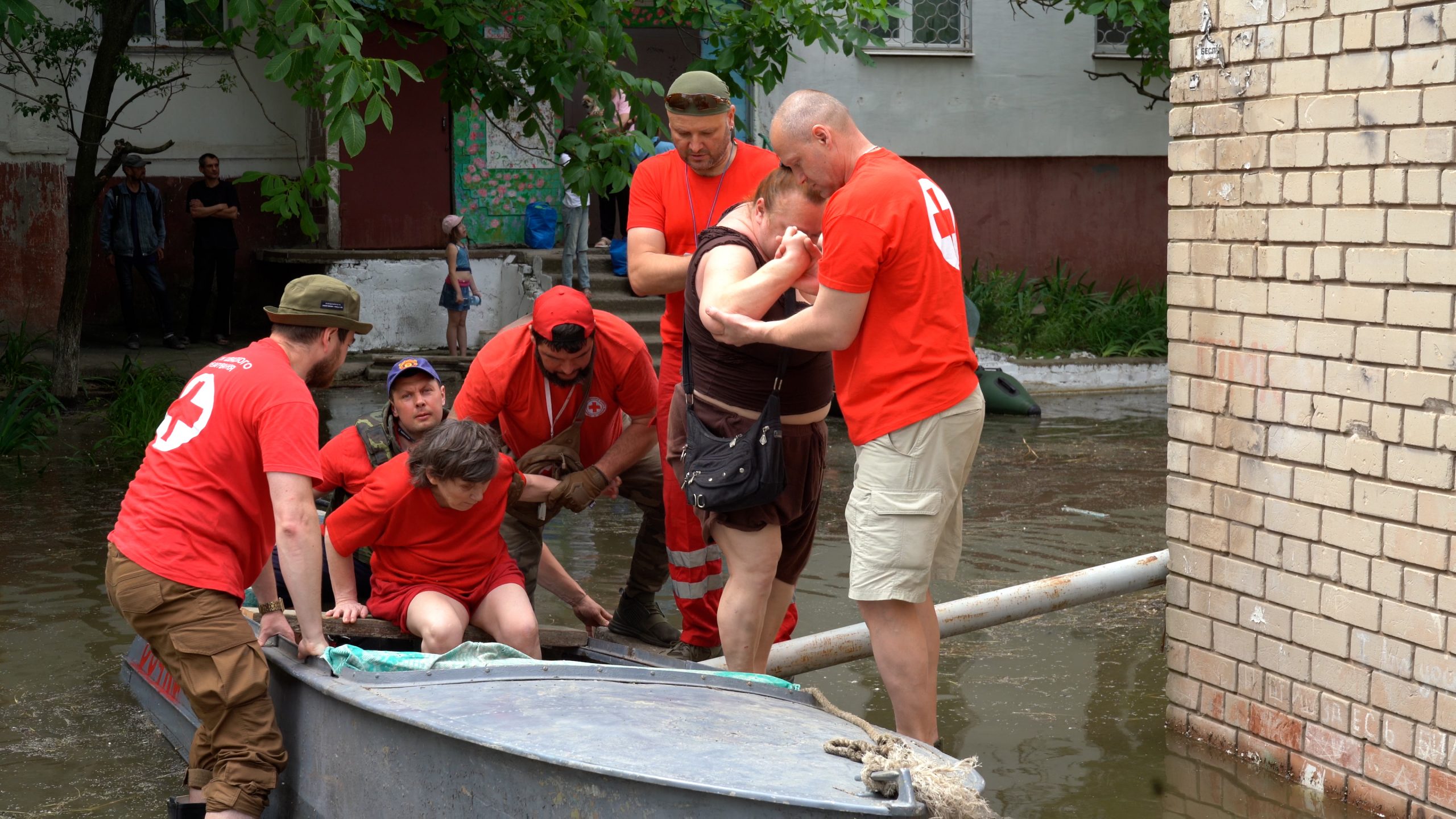
The war is ongoing, and the Ukrainian Red Cross continues to provide comprehensive and effective humanitarian assistance to all those in need, takes care of the most vulnerable, assists in restoring Ukraine, and stands ready to respond to any emergency to save lives.
We stand by those in need!
